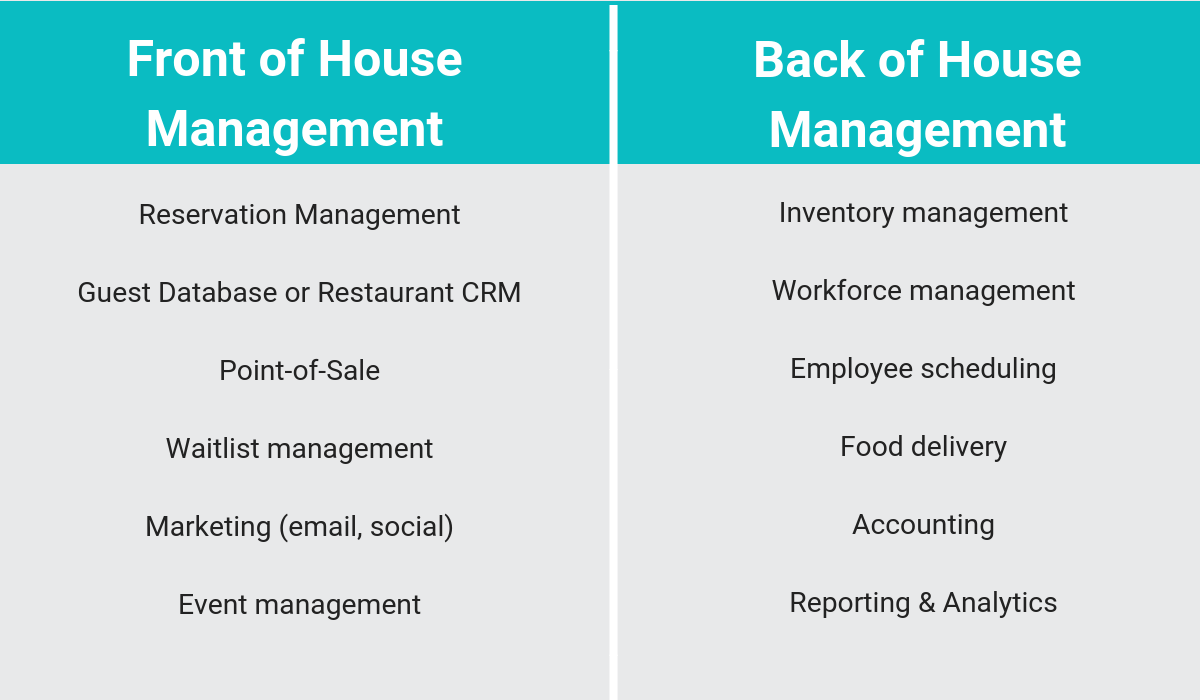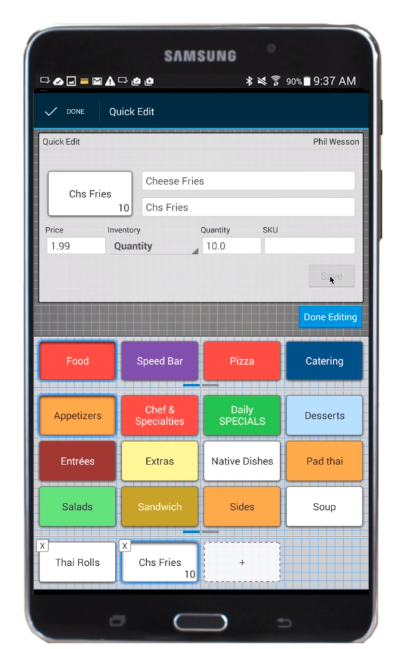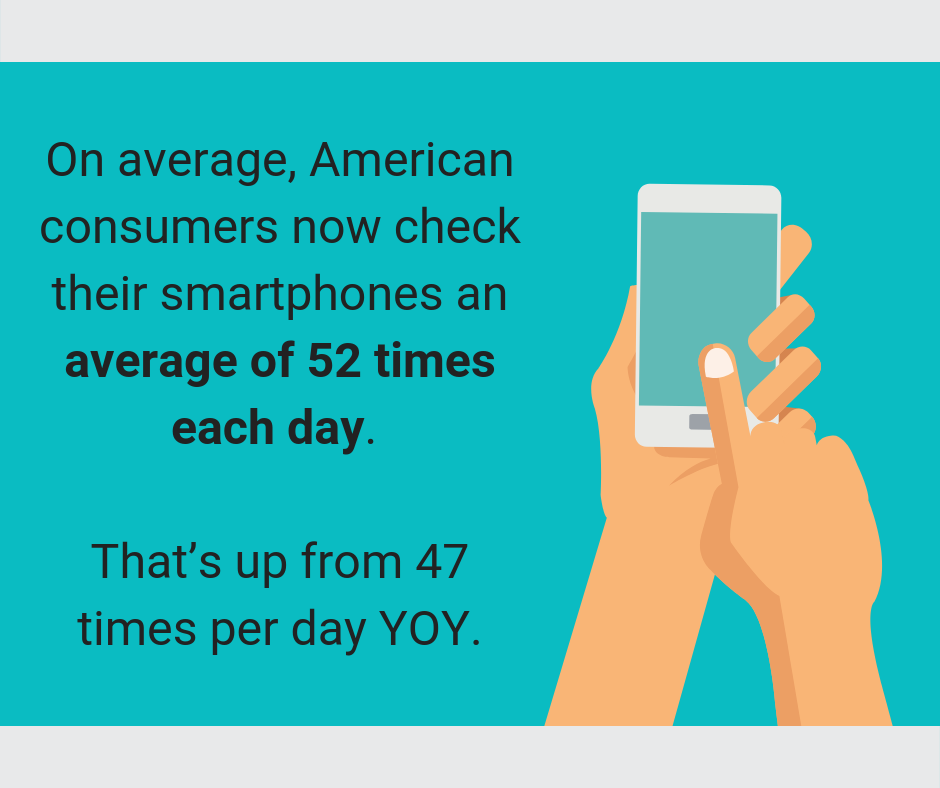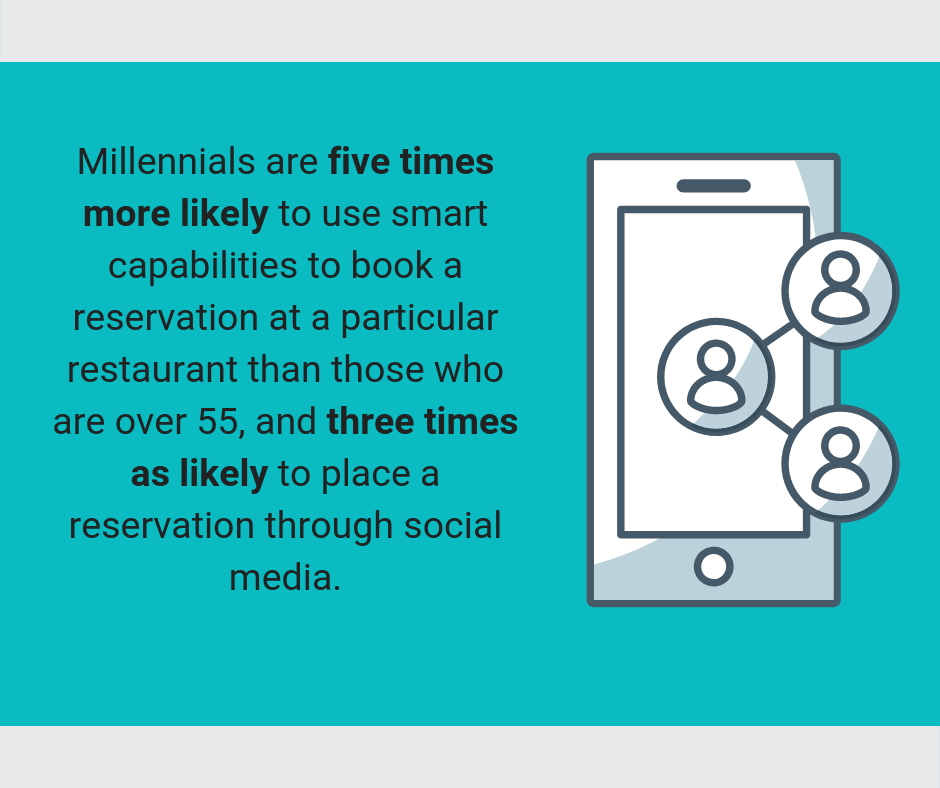5 Powerful Features For Effective Restaurant Management Systems
Molly Weinberg
5 min read
Dec 5, 2018

Molly Weinberg
5 min read
Dec 5, 2018

When you hear the phrase “restaurant management system,” your head might start spinning. We all know you can’t have just one. From front-of-house to back-of-house, you’re going to need several systems to run an efficient restaurant operation.
Here’s a quick run-down of the systems restaurants are using and the areas where they fit.

Finding the right restaurant management systems to power your business can seem like a daunting task, but it doesn’t have to be. Like most things, preparation matters. To help in the decision making process, you’ll need to rank the capabilities of systems you are evaluating. If you already have a vendor you’re looking replace, it’s helpful to identify where your current technology is missing the mark.
Not sure what’s out there or how to start prioritizing? No problem. Here’s the features to consider when choosing efficient restaurant management systems.
The reality is you will rely on multiple systems to run your business, but the good news is that many systems connect and share data. This is why it is important to identify companies in the hospitality space that are building their technology in an open and connected way. When a company’s product philosophy includes wanting to connect with other systems to make their clients’ lives easier, it’s a good sign.
Not all systems will be able to connect. For example, front-of-house and back-of-house technology don’t often share the same data sets. There are some key functions like reservations, guest database, and point of sale where integration makes sense. Imagine all your reservation data syncing into your database. Once guests arrive, you can track and store all their order details, like what they order and how much they spend, on their guest profile. It is possible and can result in saved time, happier guests, and more money in the long run.
When evaluating systems, you should ask what integrations are available with the product (see examples below). Chances are the system integrates with the technologies you already use. You don’t have to be a web developer to understand the integration to get the benefits. Luckily, the work will already be done for you. Here’s some examples:
Inventory & Delivery Systems: By integrating these two systems, you can always surface up exactly what is available from your kitchen and menu on the delivery platforms. So when you 86 an item, your delivery platform knows to remove from you customer facing online menu.
For example, Toast POS integrates with Olo and Grubhub to help streamline inventory, POS data, and delivery orders.
Reservation Bookings & Guest Database: When your reservation book talks to your guest database, the opportunities are endless. You can collect information on guests before they even walk in the door and build robust guest profiles. This will prepare your staff pre-service, and improve and personalize service.
POS & Schedule Management: Integrating your POS system and your employee scheduling program means real-time sales and labor data plots into your schedules, so you can forecast sales and labor, better build schedules, and even allow employees to clock in via your POS vs. using two systems in their shifts.
Our POS partner, Lightspeed, integrates with Agendrix, a cloud based employee scheduling app.
Event Software & Table Management: If you have event space and your team asks if your restaurant is at full capacity tonight, you want to be able to answer with confidence. When your event tool integrates with your table management, you can. Integrations like SevenRooms and Tripleseat, gives you full visibility into private event bookings right alongside table reservations — complete with setup and breakdown times!
Even if a system does not currently integrate with one of your other systems, they can most likely find a way to add your needed integration to their partner portfolio, if they are a product that is open and connected.
Finding and purchasing a pre-built system is more cost effective for your restaurant; however, you don’t want to end up with a cookie-cutter product that does not allow for any flexibility around your restaurant’s unique needs. Each restaurant is different and going to need to use a system in different ways. This is why having the ability to customize your account is crucial.
Your team will be more likely to use the system, so you are getting the full value out of the program, especially if this system is replacing a legacy system.
What do we mean by customization? It varies. It can be something as simple as being able to reflect your branding and color scheme on all out-ward facing aspects of the product, like your online booking flow, to setting up your inventory periodic automatic replenishment (PAR) levels for low stock notifications to match your ordering schedule.
Toast POS, offers complete menu customization. You can select the days and times certain menus or menu items are available. Restaurant owners can also select which menu items they want to make available online. Plus, identify certain items that cannot be discounted, choose the items that are redeemable for rewards points, and even add descriptions and images to your menu items. While the the base technology is the same for all their users, their customization options can help make a restaurant’s POS seem like it was created for them.

Another area that calls for customization is the floor plan you’re using for your reservation and seating management. Every restaurant has a different layout, and you’ll want to be able to reflect yours to accurately reserve your books and help your hosts strategically assign and seat tables. Check out our recent blog post on restaurant floor plans to learn how this can work for you.
When we talk about accessibility, there’s two different perspectives you need to consider. 1) access for you and your staff and 2) access for your customers. Both are important.
Access for you and your staff
We are all on the go – all the time. How often do you find yourself sitting in front of a computer? This is exactly why you need to find systems with mobile access, which often means a cloud-based system. While this seems like this should be a no-brainer, many products developed 5+ years ago, might not have a mobile friendly-version. Plus, it’s much different to have a mobile specific version of the product vs. just taking the desktop version and optimizing for a mobile device.
Today, mobile options can include your phone, your tablet, or even a smart watch. For example, at SevenRooms we offer key aspects of our table and guest management features on the Apple Watch. This means whether you’re on vacation, at your home office, or on your way into the restaurant, you’ll always know who is coming in that shift and have real-time insight into what’s happening. Specifically, you won’t miss a guest check in, have access to guest profiles, and receive in-service alerts.
Access for your customers
Restaurant professionals are not the only ones that are busy. Your guests are too. This is why it’s crucial for the same mobile access capabilities to translate to your guest facing booking flow. From their computer, their phone, or tablet, you want a reservation flow that is optimized for their device type.

Plus, you’ll want to reach your guests where the are – which often means social networks, especially when targeting Millennials.

When evaluating guest facing technology, you should ask if they connect with your social network pages, so that your customers can connect and engage with your restaurant directly.
It does not stop there when it comes to accessibility of your restaurant technology for your guests. It’s important your technology is ADA compliant, which means you should be asking yourself are my digital services (website and mobile app) compliant?
What does ADA Compliant mean?
The Department of Justice (DOJ) published the Americans with Disabilities Act (ADA) Standards for Accessible Design in September 2010. These standards state that all electronic and information technology must be accessible to people with disabilities.
To evaluate where your current technology stands, contact your website hosting firm to run a diagnostic scan of your site to ensure your are in compliance with the latest ADA guidelines. If just approaching the purchase of guest facing technology, make sure you are asking if the company is ADA compliant during the sales process.
If your business is multi-location or you have plans to expand to more than one location, the importance of finding systems that have an enterprise philosophy is important. You want the option to connect your locations to benefit from the ability to look at the health of your overarching business from one platform. Gone are the days of logging in with 6 different logins to view each location, export reports, and then try to combine them manually through Excel.
Here are a few examples of how multi-location-enabled technology can benefit your business:
Reservation Call Centers
When you’re a restaurant group or a hotel with food & beverage outlets, you might rely on a reservations office to take the incoming requests and slot them into the right location’s book. This often means a reservationist might have a unique tab open for every restaurant’s book to easily reference the availability. That can be a lot of tabs, with room for human error! When you use a reservation management system with enterprise capabilities, your call center agents can have access to all reservation books through one account. With a few clicks, they can select a location from a dropdown and look at the book and book a reservation. Plus, good news, this means the guest now lives in your global database.
Top Spending Guests
Want to know who your top 50 guests are across all your locations? No problem. When your database is global AND your POS system integrates with your reservation book, you can pull this list with just a few clicks. This gives you the ability to market to these guests, build loyalty, motivate them to try a new location within your group, and surprise and delight no matter where they dine. Not only will you know who your true VIPs are, but you can run reports across your guest database to identify ordering trends that can impact your future planning.
Consistent Service
Guests want a personalized, consistent experience across your properties. Even if your locations have their own unique brands, your guests expect to be treated well and this means remembering their preferences, dietary restrictions, and more. How are you supposed to know if a guest is gluten-free if she’s only ever dined at one location and now is trying your newest restaurant? Are your maître d’ supposed to hop on the phone every day to review the reservations and share these tidbits? It’s not realistic and certainly not scalable. Having a connected system that allows a guest’s preferences to be stored with a person’s details across locations will empower your staff to deliver the same experience no matter which location they choose.
Sales Across Locations
One of the biggest challenges of having a multi-location business is managing overall performance. You have to be clued in to the sales across all locations to really know what is impacting the company’s health, which is why investing in systems that are cloud-based and connected (think reservations, POS, and inventory management) can give you easy access to full visibility into how things are going.
Plus, when your inventory across location is connected you can share insights into what menu items are best sellers and where. This is a great way to identify trends across your group.
Implementing new technology at your restaurant can seem scary, especially if you are replacing a legacy system. For this reason, having the right partner is so important to help ease you and your team through the transition. You’ll want to identify technology partners that prioritize their clients’ experience and have the following:
When you select a partner that is strictly in it for the restaurant industry, you’ll find that their goals align with yours and you’ll never feel like your lower on their list of priorities when it comes to supporting your business.
Based on these five features, here’s a quick review of the questions you should be asking when looking for restaurant management systems.

Now it’s time to go and evaluate how your current restaurant management systems stack up against these key features. Once you know what you’re shopping for, you now know what questions to ask.
If you’re in the market for a reservation, seating, and guest management system, we’d love to chat. Request a demo with SevenRooms.